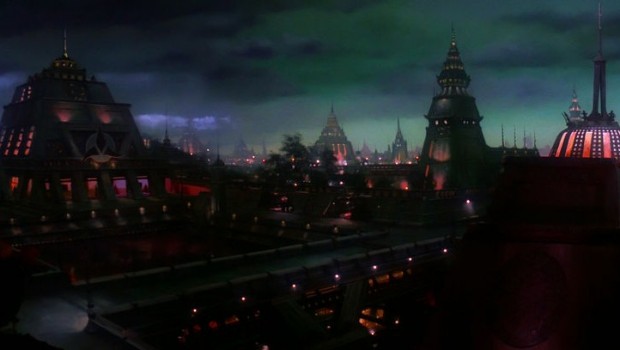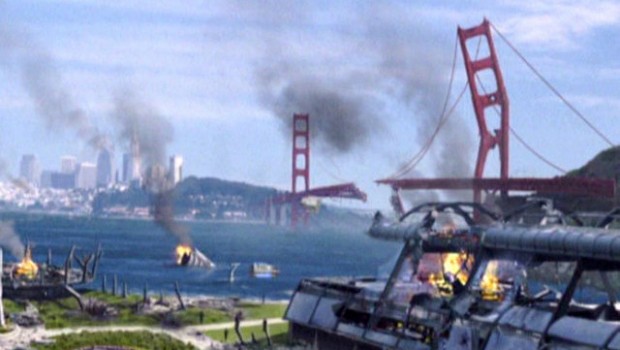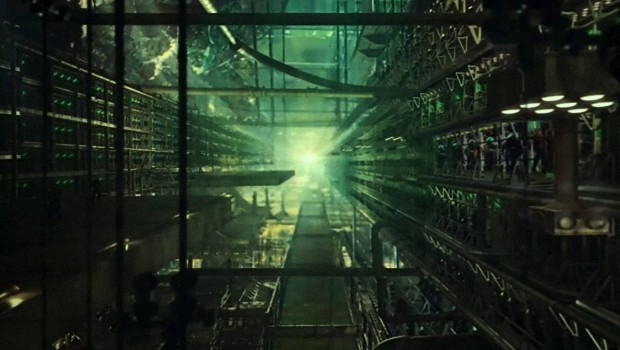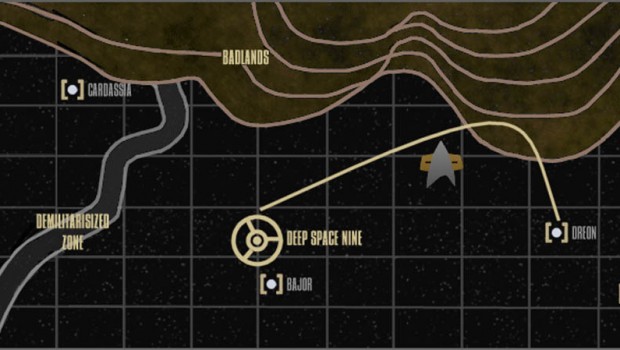
The Klingon Empire: Accepted Ally or Tolerated Blot?
In this two-part editorial series, FNS foreign affairs reporter Flynn Dupond questions the Federation’s alliance with an empire built on conquest, subjugation, and conflict.
I recently found myself wandering the main promenade of Starbase 118 along with my daughter. It is usually a bustling hive of ordered chaos, but with the (then) upcoming Khitomer Accords anniversary approaching, everyone was moving about—buying gifts, hanging decorations, etc.
My daughter, a precocious youngster of five, was aware that something special was impending, and asked me what was going on. I attempted to explain that, many years ago, the Federation began to work with the Klingon Empire toward peace. I managed to give a cursory overview without delving into the rich and convoluted history the Empire and the Federation had shared together. Remember, this is a five-year-old I’m trying to communicate with. Even with this ultra-condensed version, my daughter looked thoroughly bored by my ramblings, and with an, “Oh,” she darted off to join her friends and munch on jumja sticks.
As I continued to window shop and keep an eye on her, my eyes were drawn upwards, toward the ceiling, where a Federation banner and a Klingon Empire banner hung side by side. I’d seen such imagery before, and it had often stirred the patriotic portions of my heart for days after. But as I observed that harsh, emblazoned trefoil, my thoughts returned to the abridged lecture I’d just given. In that moment, the alliance between the two previously feuding governments seemed so improbable, so impractical, that I simply couldn’t believe it had held.
Later that night, I began to study the Klingon Empire in detail. I poured over any confirmed and unclassified information I could dredge up, and my findings shocked me. I decided my next piece for the FNS would not be on the Khitomer celebrations. Virtually all of my esteemed colleagues would be following that particular story. Instead, I would delve deeper into one the of the best-kept secrets of the Federation: its abusive, abrasive comrade, the Klingon Empire.
Different Standards
To join the Federation as a member world, a planet must demonstrate several things. The planet must be united under a single governing body. This government may not practice any sort of discrimination, or function with a caste system, and each member of the society must be treated equally and with respect, as outlined in the Rights of Sentience. The planet must also possess some sort of warp technology, however rudimentary. Only after these conditions have been met will the Federation Council begin to consider an application for membership.
Now, it should come as no surprise that the Klingon Empire does not satisfy most of these requirements. Short of having warp technology, this most controversial ally of the Federation is sorely deficient in most of these areas. It should also be noted that the Empire has never expressed an interest in joining the Federation as a member world. However, the question of why the Federation chooses to call this “government” an ally escapes this author’s comprehension, a perspective I hope you will soon understand.
Rampant Expansionism
From the first contact between humanity and the Empire, the stereotype that Klingons are brutal, warlike and barbarous has been well-earned. Whereas the United Federation of Planets accepts and absorbs planets and governments only when such attention is sought, the Empire expands its territory under a policy of rampant expansionism. Conquered planets are then subject to the stern laws of the Empire. Resources are strip mined, people are herded into workforces, and the world is turned into what is most valuable to the Empire, instead of utilizing the unique properties of a planet, and allowing that planet to remain undamaged.
History recounts the incident at Organia more than a century ago. As the Federation and the Empire prepared to wage war, a landing force was placed on the planet Organia, in an attempt to secure the particularly strategic position. While the incidents that occurred on the surface of Organia eventually lead to the Organian Peace Treaty that kept the Federation and Klingon Empires from launching an interstellar war, the Klingon leadership attempted to kill two hundred peaceful, innocent inhabitants, in order to expose two Starfleet officers.
This blatant disregard for life is consistent with the general policies of the Empire, even at present. During the brief but disastrously costly Federation-Klingon War of 2372, the Empire annexed several Federation worlds, including Archanis. When the Khitomer Accords were resigned just over a year later, Starfleet and humanitarian personnel arrived to find the utter devastation wrought upon both the planet itself and its inhabitants. One need only look upon the memorials left on these worlds to understand the depth of the damage done by the Klingon Empire—to a former ally, no less.
Stay tuned for part 2 of Flynn Dupond’s examination of the Klingon Empire.
- BREAKING: Starfleet confronts temporal incursion at New Cyndriel - 240205.09
- Behind the Scenes at FNS: Office Oddities, Tribbles, and a Cat - 240205.02
- Starfleet Mission Updates: Stardate 240106 - 240106.30
- Starfleet Mission Updates: Stardate 24010 - 240102.29
- Immerse Yourself in Andorian Culture: A Traveler’s Guide - 240102.26
- Thiaki Region’s unusual properties linked to ancient war and star-destroying weapons - 240002.01
- Starfleet Mission Updates: Stardate 240001 - 240001.30
- Starfleet Mission Updates: Stardate 239912 - 239912.31
- Starfleet Mission Updates: Stardate 239905 - 239905.31
- Starfleet Mission Updates: Stardate 239904 - 239904.30


 Previous Article
Previous Article Next Article
Next Article Preparing for the Worst: Perspectives from a Prison Camp Survivor
Preparing for the Worst: Perspectives from a Prison Camp Survivor  To My Beloved: Heart Of Ohmallera
To My Beloved: Heart Of Ohmallera  Profile in Courage – Captain John Charles “JC” Kessler, USS Caboto
Profile in Courage – Captain John Charles “JC” Kessler, USS Caboto  Genetic engineering in the Federation: a time for reflection
Genetic engineering in the Federation: a time for reflection  Starfleet’s Evolving Mission in the Beta Quadrant
Starfleet’s Evolving Mission in the Beta Quadrant  The “hive mind” of the Federation and the Borg: Are they similar to one another?
The “hive mind” of the Federation and the Borg: Are they similar to one another?  A Retrospective on the Maquis
A Retrospective on the Maquis  Act Now: The Federation’s Failing Security
Act Now: The Federation’s Failing Security